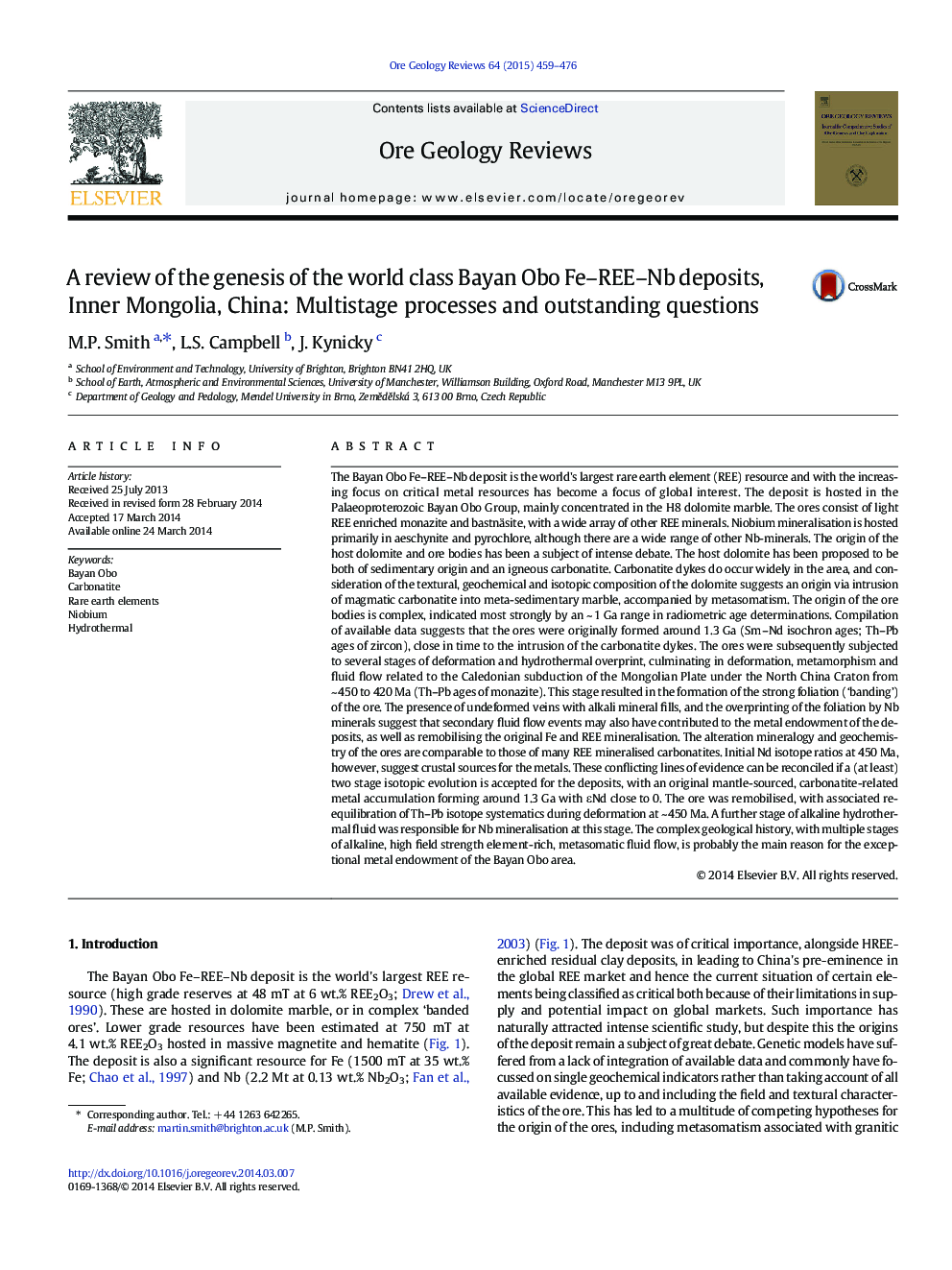| کد مقاله | کد نشریه | سال انتشار | مقاله انگلیسی | نسخه تمام متن |
|---|---|---|---|---|
| 4697118 | 1637239 | 2015 | 18 صفحه PDF | دانلود رایگان |
The Bayan Obo Fe–REE–Nb deposit is the world's largest rare earth element (REE) resource and with the increasing focus on critical metal resources has become a focus of global interest. The deposit is hosted in the Palaeoproterozoic Bayan Obo Group, mainly concentrated in the H8 dolomite marble. The ores consist of light REE enriched monazite and bastnäsite, with a wide array of other REE minerals. Niobium mineralisation is hosted primarily in aeschynite and pyrochlore, although there are a wide range of other Nb-minerals. The origin of the host dolomite and ore bodies has been a subject of intense debate. The host dolomite has been proposed to be both of sedimentary origin and an igneous carbonatite. Carbonatite dykes do occur widely in the area, and consideration of the textural, geochemical and isotopic composition of the dolomite suggests an origin via intrusion of magmatic carbonatite into meta-sedimentary marble, accompanied by metasomatism. The origin of the ore bodies is complex, indicated most strongly by an ~ 1 Ga range in radiometric age determinations. Compilation of available data suggests that the ores were originally formed around 1.3 Ga (Sm–Nd isochron ages; Th–Pb ages of zircon), close in time to the intrusion of the carbonatite dykes. The ores were subsequently subjected to several stages of deformation and hydrothermal overprint, culminating in deformation, metamorphism and fluid flow related to the Caledonian subduction of the Mongolian Plate under the North China Craton from ~ 450 to 420 Ma (Th–Pb ages of monazite). This stage resulted in the formation of the strong foliation (‘banding’) of the ore. The presence of undeformed veins with alkali mineral fills, and the overprinting of the foliation by Nb minerals suggest that secondary fluid flow events may also have contributed to the metal endowment of the deposits, as well as remobilising the original Fe and REE mineralisation. The alteration mineralogy and geochemistry of the ores are comparable to those of many REE mineralised carbonatites. Initial Nd isotope ratios at 450 Ma, however, suggest crustal sources for the metals. These conflicting lines of evidence can be reconciled if a (at least) two stage isotopic evolution is accepted for the deposits, with an original mantle-sourced, carbonatite-related metal accumulation forming around 1.3 Ga with εNd close to 0. The ore was remobilised, with associated re-equilibration of Th–Pb isotope systematics during deformation at ~ 450 Ma. A further stage of alkaline hydrothermal fluid was responsible for Nb mineralisation at this stage. The complex geological history, with multiple stages of alkaline, high field strength element-rich, metasomatic fluid flow, is probably the main reason for the exceptional metal endowment of the Bayan Obo area.
Journal: Ore Geology Reviews - Volume 64, January 2015, Pages 459–476
